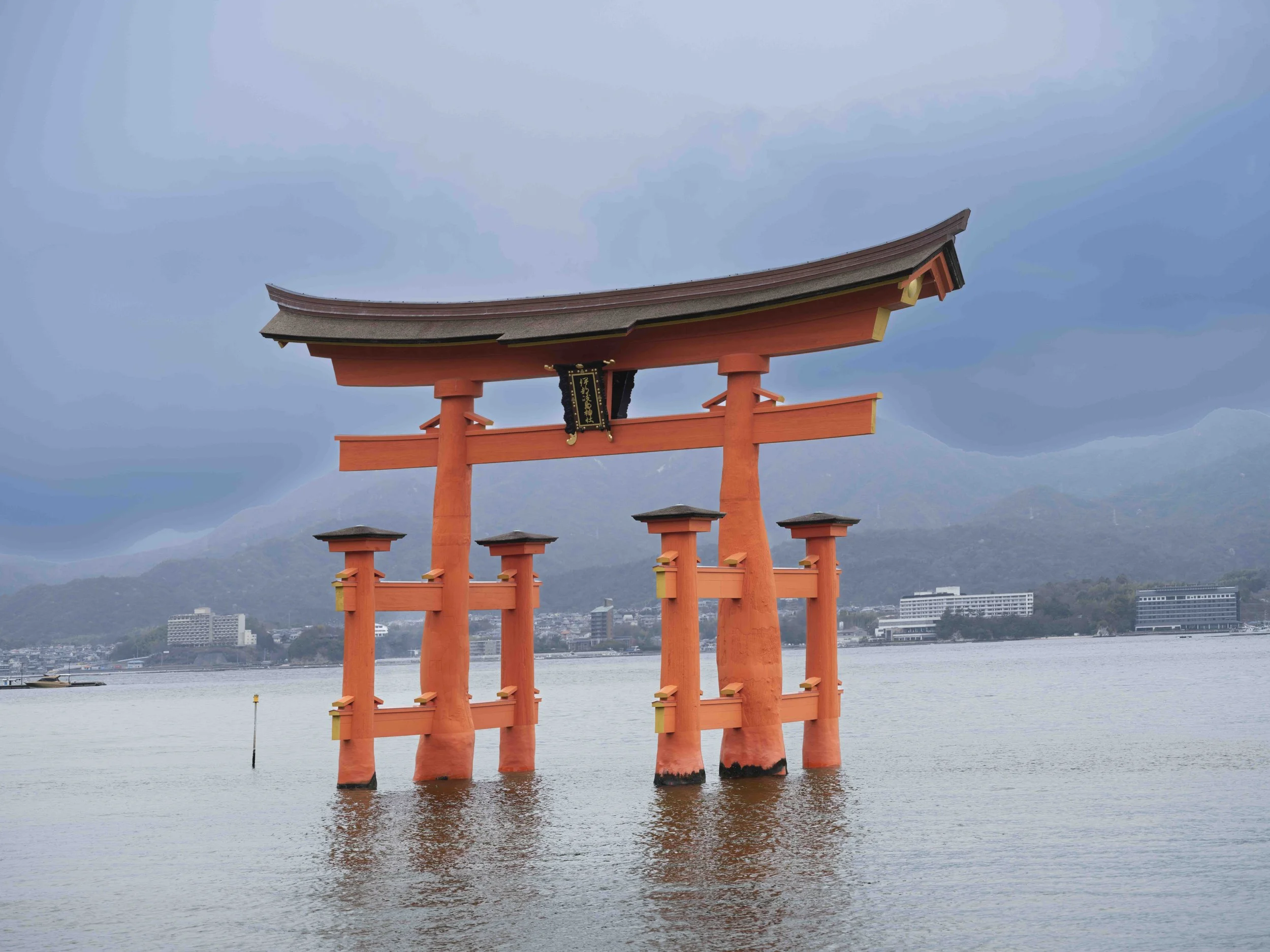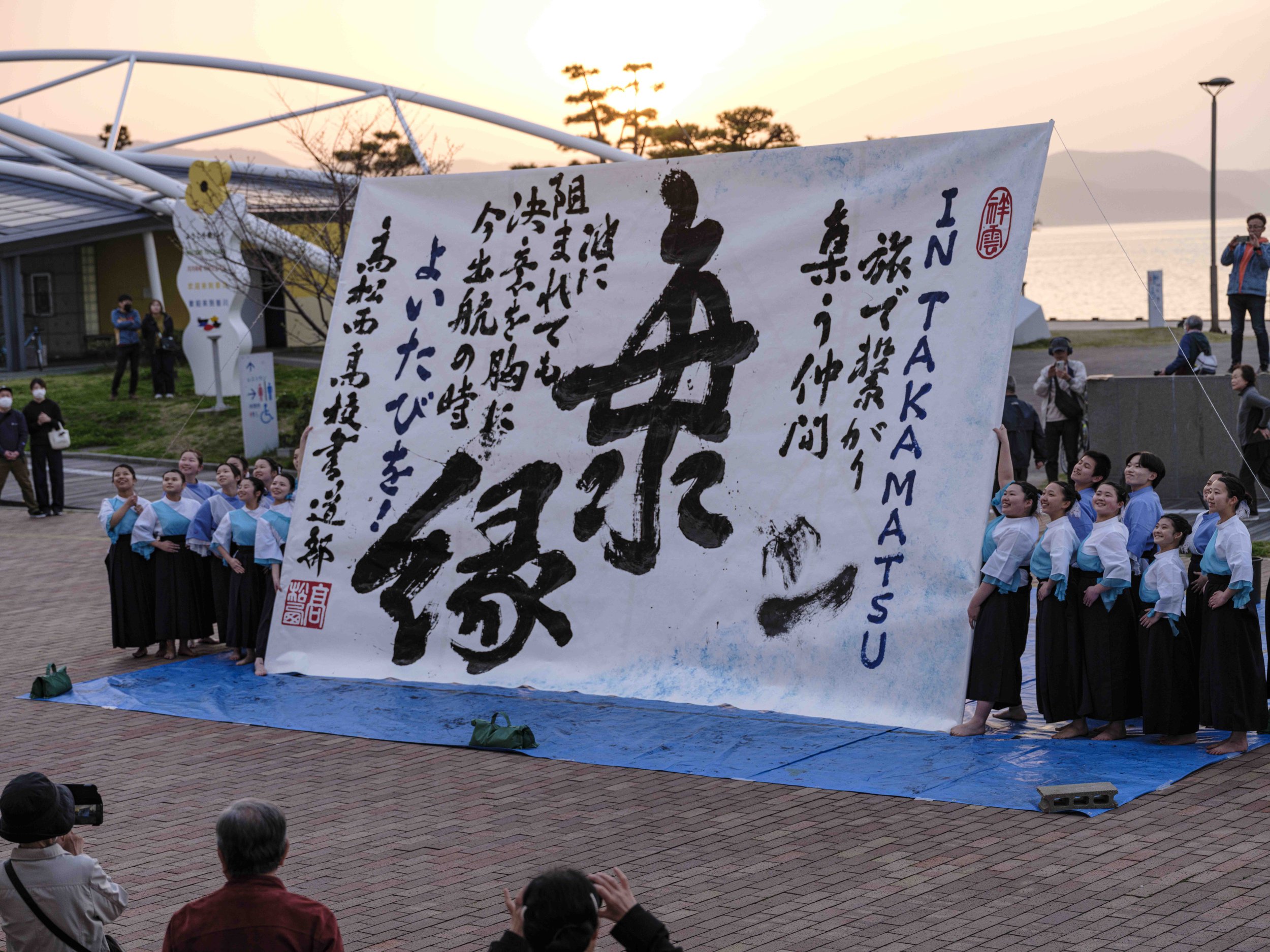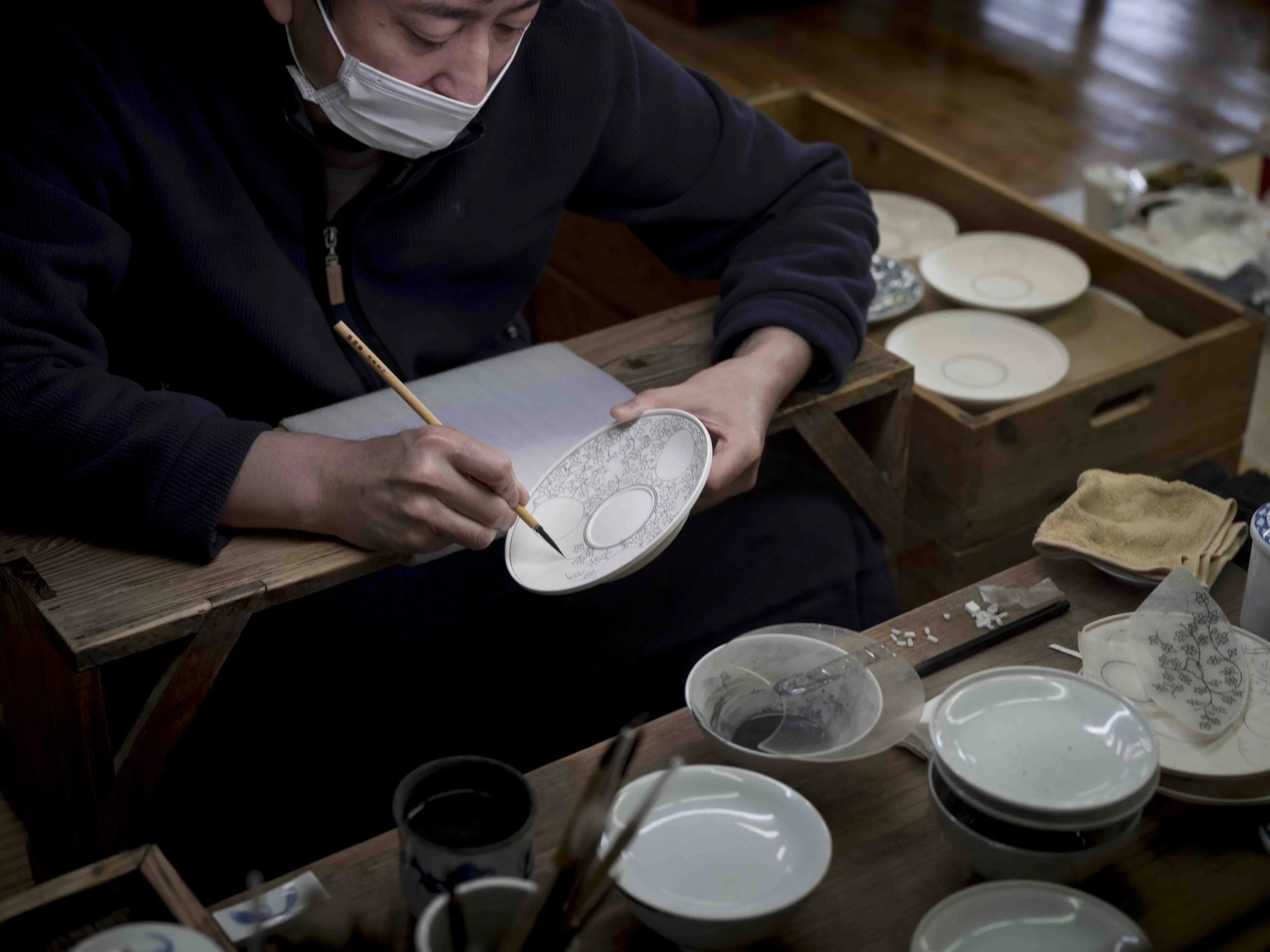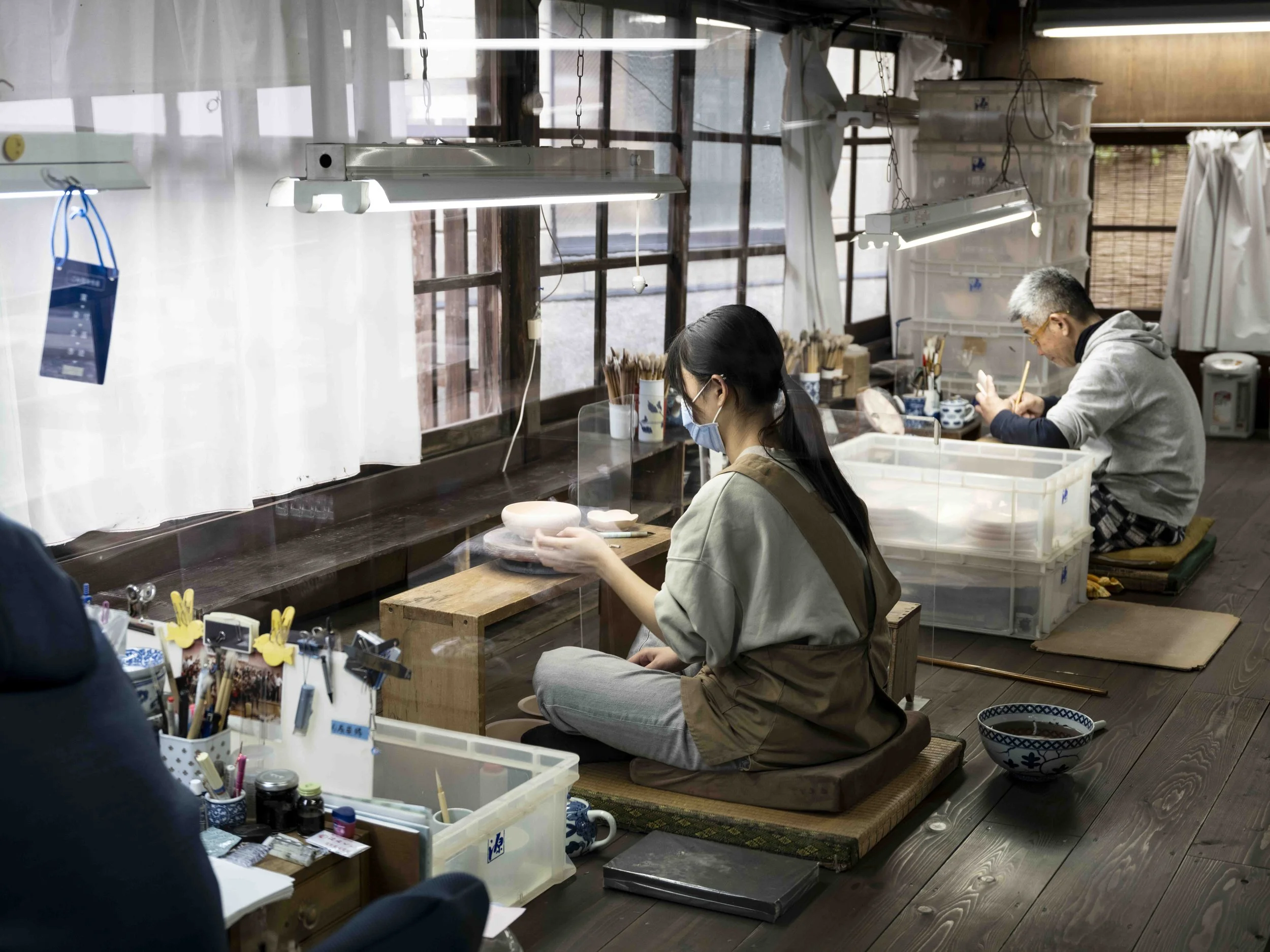Uwajima to Karatsu - April 2, 2024
Shinto shrine leading to the Tori gate above
Overnight from Hiroshima on April 1, we sailed to Uwajima, a very small town on a very small bay at the southernmost point on Shikoku Island and one of the most important locations for the Japanese pearl industry.
Farewell ceremony
Before I talk about this, an aside. As you may have noticed, I have described a couple of the ports as being small towns, small ports. Because of the relatively small size of the ship we are able to travel to and dock in ports that see cargo ships but very few passenger boats since most cruise ships would not be able to be accommodated, simply too large. One of the benefits of this is that our ship is treated as a very big deal by the towns that we visit and we are often greeted by townspeople coming down to the dock to look at the ship along with delegates from the town and local school bands playing a welcome. When we leave there is always a farewell event on dockside, bands and dancers and everyone quite literally waving until the ship disappears from view. As a courtesy we are asked to reciprocate, so everyone crowds their balconies on departure and waves in return.
Farewell ceremony
Now Uwajima, which in addition to pearls also has a local and very prized potato growing agricultural presence. Who knew, but apparently potatoes do feature in some parts of Japanese cuisine. Because flat agricultural land is a rare commodity in Japan the potatoes are grown, much like rice in Thailand and Myanmar, on terraces built up the side of very steep hills that rise out of the sea with a foreshore of probably no more than 50-100 metres. On this narrow strip of 50-100 metres along the coastline all the buildings, homes and roads must be built so the only space left for agriculture is up the sides of the mountains. On the day that we visited the sky was clear and lapis blue and the sun was brilliant as we climbed up through the potato terraces along a paved path that zig-zagged its way uphill, along which we were met by shifting and stunning vistas of sea and sky.
View from the top of the potato terraces with rafts of oyster beds
I won’t spend any time on the pearls, the potatoes having two distinct advantages, edibility and affordability.
On the drive from the pearl fishery back to the ship our Japanese guide spent much of the trip explaining the concept of “inside” and “outside” to us. The term uchi literally means “inside”, while the term soto is the opposite and literally means “outside “. These words are used to differentiate social behaviour between people from the same group (uchi) and people from different groups (soto). Through these concepts, Japanese people classify the people around them: those inside, and those outside. The way Japanese people behave, speak and relate to people in one of these groups is very different.
Family is the core of the Japanese social code. That is why the term uchi is commonly used to refer to the “house” and, consequently, to the “family” (because family members are those inside the house, their intimate space). Therefore, uchi would include those people from our closest environment, such as our family, our closest friends, our city and prefecture, school, university or the company where we work. On the contrary, the soto group would include those that are more external to our environment, but still have some kind of relationship with us, such as our company’s clients, distant acquaintances or foreign people. In Japanese there are expressions such as “uchi no daigaku” (“my / our university”), “uchi no kaisha” (“my / our company”) where the word “uchi” is used to name everything that is in our environment.
According to Japanese thought, we can only be truly ourselves with the people of our uchi, while with the soto people we must follow the strict guidelines of the social codes established by the term tatemae (the “facade”, the things that one should say and feel in public), which is contrary to the term honne (the true feelings and opinions). In general, Japanese people treat those considered soto in a polite and respectful way, although sometimes it may seem a little cold, because deep down there is the feeling of “you are not from my close circle” or “you do not belong to my uchi”.
This is expressed in many ways, not least, in the requirement that shoes be removed when going into a house. This is less about sanitation, dirty shoes in the house, but is a ritual of respect to ensure that the outside, the sato does not pollute the sanctity of the uchi. This also felt in other more profound ways, Japan is a collectivist society and does not easily allow sato peoples, eg foreigners, to be readily admitted to their uchi group. However, it’s not much different than Maritimers who treat non-locals as CFA’s “come from away’s” and who need at least one generation to be regarded as local or uchi.
Imari porcelain being painted
Leaving Uwajima in the evening we sailed for Karatsu, the in the vicinity of which are to be found the Imari ceramic kilns. Imari and Japanese porcelain in general has a long and compelling history which I won’t attempt to set out here. I’m sure that most of my readers are familiar with Imari porcelain but whether you are or not, please do look them up on the web, they are stunning and their history and its complex interweaving with Chinese and Western culture and Western history is rich, complex and fascinating. It was my favourite moment of the trip so far.
Imari porcelain being painted
Unfortunately when I returned to the ship from this expedition I collapsed in bed with the flu where I have been since then. The only moments of excitement occurred the day after our Imari ceramics when I had taken to my bed and we had sailed to Busan In South Korea. On our passage over we had winds gusting to 55 knots and 3 metre swells so the boat was rocking and rolling but in my fevered state it felt perfectly normal, not so to V unfortunately. At the same time we were told that there was an earthquake in Taiwan and the potential for a tsunami that might affect the Japanese coast, which fortunately did not occur.
Arriving in Busan, I had to crawl out of bed and present myself to the Korean Customs and Immigration people who came aboard to stamp our passports. Luckily they were not particularly vigilant and it was a swift and routine procedure. The following day when we returned to Japan, it was less so. At that point I had seen the ship’s doctor twice, and although I had been tested for Covid and another Chinese flu that is making the rounds right now, I tested clear from both. Nonetheless I had to be reported to the health authorities in Japan prior to our arrival. Luckily I had crawled into the shower and made myself look as human as possible in preparation for facing the Japanese entry authorities. Hearing a knock on our stateroom door, V answered the knock and found a Japanese Quarantine doctor, an Immigration official and the ship’s doctor in the corridor waiting to be admitted. This was a real surprise since we had been told that we would have to get off the ship to meet the entry people, so I was somewhat concerned that they had found it necessary to come to me. My luck held as I was not in bed but sitting in a chair, with the lights low when they arrived to examine me. I was still running a fever of 100.5 but the ship’s doctor rallied valiantly in my defence as the Quarantine man wavered but ultimately he came down in my favour. So here I am feeling significantly better and with a couple of days still left on our adventure.
More to come!







